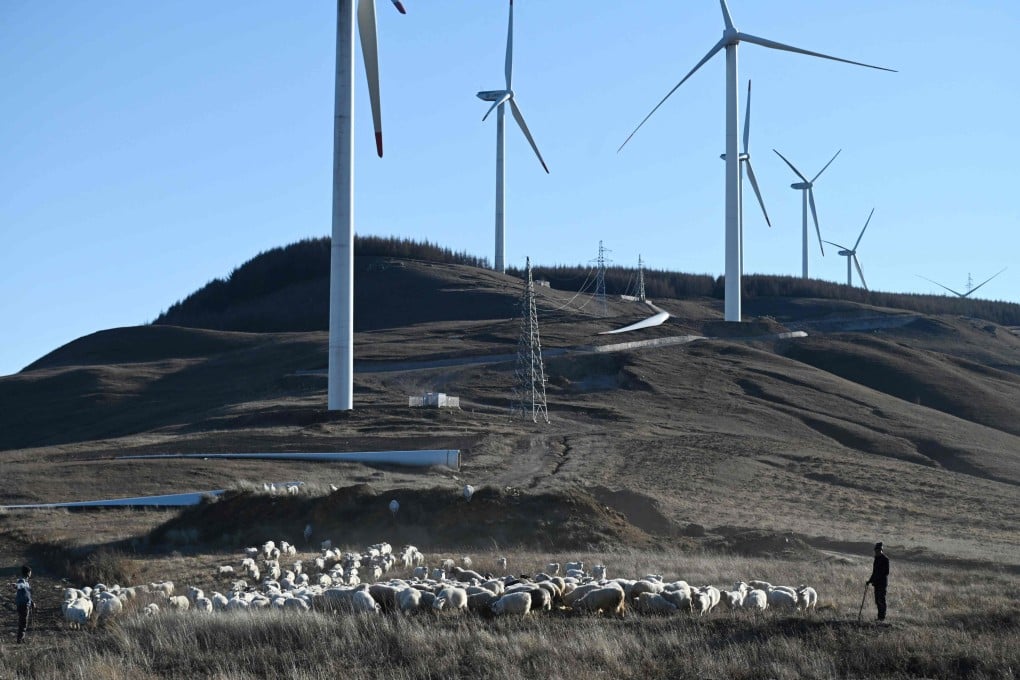Advertisement
Climate change: Renewable energy to meet over 70 per cent of China’s additional power needs in next three years, says IEA
- Even as state subsidies are being phased out, the rapid growth of onshore wind and solar farm installations is expected to continue
- Renewable energy expansion is the mainstay of China’s strategy to gradually decarbonise its coal-dominated electricity supply
Reading Time:3 minutes
Why you can trust SCMP
1

Renewable energy will meet over 70 per cent of China’s additional electricity demand in the next three years as coal’s role in powering the world’s second largest economy continues to decline, according to the International Energy Agency’s latest projection.
Additional demand refers to any increase from today’s level.
Even as state subsidies are being phased out, the rapid growth of onshore wind and solar farm installations is expected to continue, with their combined generating capacity surging 75 per cent to 930 gigawatts by 2024 from 530GW in 2020, it projected.
Advertisement
Renewable energy expansion is the mainstay of China’s strategy to gradually decarbonise its coal-dominated electricity supply, as it aims for peak coal consumption by 2025 and peak carbon dioxide emissions by 2030 to help fight global warming and climate change.
“By 2024, we expect the share of coal in the [nation’s electricity supply] mix to decline to 59 per cent,” said the Paris-based intergovernmental organisation in the latest edition of its “Electricity Market Report” published on Friday.
“Renewable energy sources are set to meet over 70 per cent of additional demand during 2022-2024, while coal meets 25 per cent of the increment.”
Advertisement
Select Voice
Choose your listening speed
Get through articles 2x faster
1.25x
250 WPM
Slow
Average
Fast
1.25x
